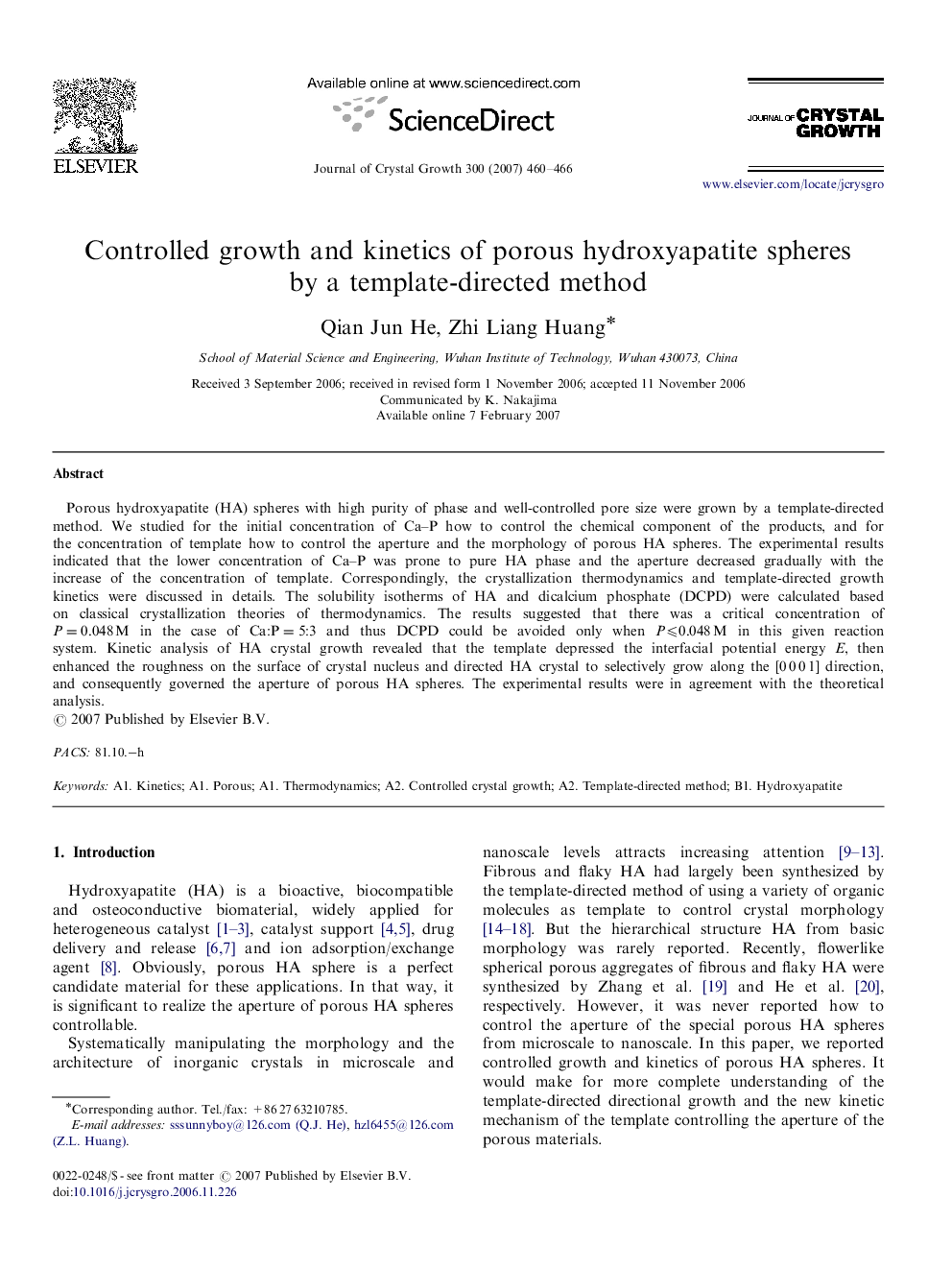| Article ID | Journal | Published Year | Pages | File Type |
|---|---|---|---|---|
| 1796796 | Journal of Crystal Growth | 2007 | 7 Pages |
Porous hydroxyapatite (HA) spheres with high purity of phase and well-controlled pore size were grown by a template-directed method. We studied for the initial concentration of Ca–P how to control the chemical component of the products, and for the concentration of template how to control the aperture and the morphology of porous HA spheres. The experimental results indicated that the lower concentration of Ca–P was prone to pure HA phase and the aperture decreased gradually with the increase of the concentration of template. Correspondingly, the crystallization thermodynamics and template-directed growth kinetics were discussed in details. The solubility isotherms of HA and dicalcium phosphate (DCPD) were calculated based on classical crystallization theories of thermodynamics. The results suggested that there was a critical concentration of P=0.048M in the case of Ca:P=5:3 and thus DCPD could be avoided only when P⩽0.048M in this given reaction system. Kinetic analysis of HA crystal growth revealed that the template depressed the interfacial potential energy E, then enhanced the roughness on the surface of crystal nucleus and directed HA crystal to selectively grow along the [0 0 0 1] direction, and consequently governed the aperture of porous HA spheres. The experimental results were in agreement with the theoretical analysis.
